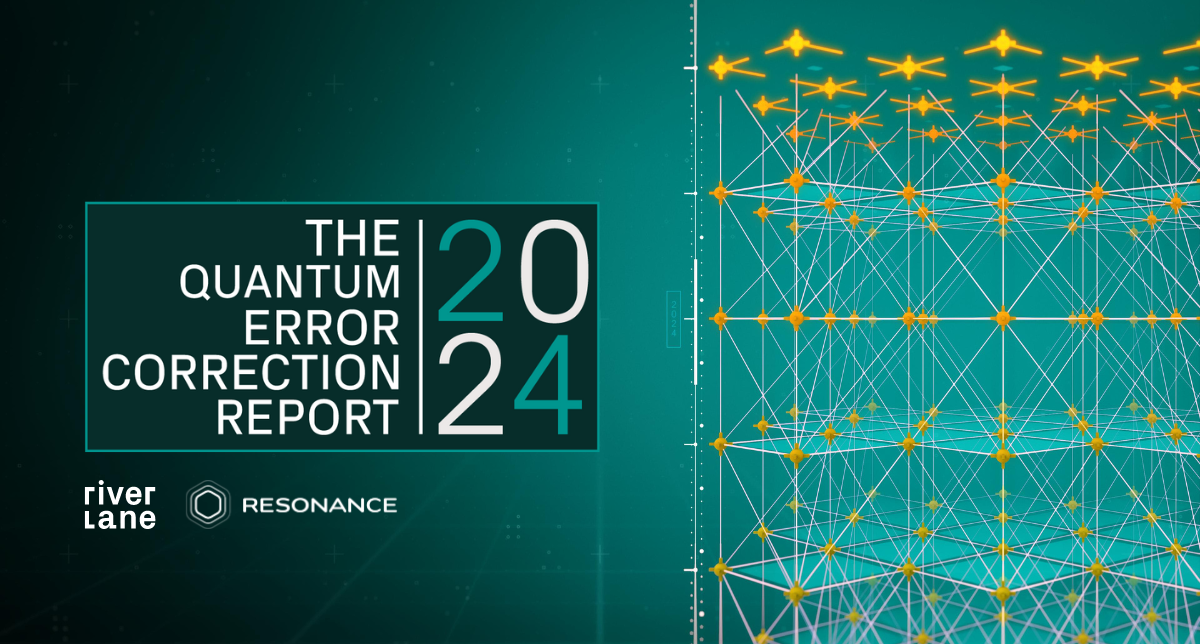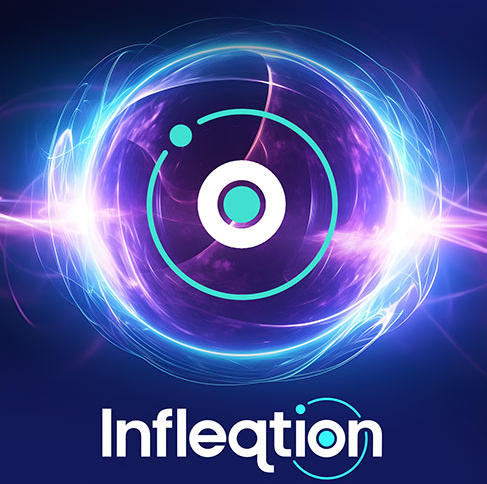Insider Brief:
- Riverlane’s 2024 Quantum Error Correction (QEC) Report emphasizes the critical role of quantum error correction in achieving scalable, fault-tolerant quantum computing, with contributions from 12 industry and academic experts.
- The report highlights the industry consensus that quantum error correction is essential to execute millions of reliable quantum operations (MegaQuOp) and advance quantum computing beyond experimental stages.
- Achieving 99.9% fidelity in qubits is a non-negotiable target for building reliable logical qubits, with QEC being applicable across various qubit platforms, including superconducting and trapped ion technologies.
- The report underscores the importance of collaborative efforts, standardization, and the development of a scalable QEC Stack to address real-time decoding and manage large-scale quantum systems.
PRESS RELEASE, Cambridge, UK – Riverlane, a leading quantum computing company, has officially released its Quantum Error Correction (QEC) Report for 2024. This comprehensive guide includes invaluable contributions from 12 experts across industry and academia with insights on the complexities of QEC technology, its role in building dependable quantum computers, and how QEC will unlock a million error-free quantum operations (MegaQuOp). According to the report, quantum error correction is no longer a distant goal—it is the fundamental cornerstone of large-scale, practical quantum computing, and its implementation is rapidly expanding across the industry.
Quantum Error Correction as the Key to Scalability
Quantum error correction, as highlighted in the report, is widely regarded as one of the most essential technologies needed to advance quantum computing from the experimental stages to real-world applications. Steve Brierley, CEO of Riverlane, reflected on the challenge of moving beyond today’s limited quantum systems: “Let me summarize that challenge in one word: errors.”

Today’s quantum computers are limited by high error rates that prevent them from managing large-scale computations. They can only execute between 100 to 1,000 reliable quantum operations (QuOps) before errors compromise the calculation process. For quantum computing to go beyond the reach of any classical supercomputer, it must execute millions of reliable operations.
The report underscores a growing industry consensus that scalable error correction is critical to overcoming these technical challenges. Simone Severini, General Manager of Quantum Technologies at AWS, reinforces this view: ” Without error correction, it will be very difficult to build a commercially relevant quantum computer.”
Without scalable quantum error correction, the dream of real-world quantum applications remains in the experimental stage. Riverlane’s report highlights key technologies such as real-time hardware decoders that will push quantum computing beyond its current experimental phase and into a commercial era.
Achieving the MegaQuOp: A Milestone Toward Overcoming Limitations
Central to The Quantum Error Correction Report’s message is achieving a ‘MegaQuOp’, a threshold of one million reliable quantum operations. This milestone, widely targeted for 2028, represents a critical turning point that could allow quantum computers to tackle problems far beyond the capabilities of today’s classical supercomputers. Jan Goetz, co-CEO of IQM Quantum Computers, notes the significance of this milestone: “The system size and gate fidelities are just now crossing the threshold required for error correction… the interesting phase for quantum computing is just starting.”
Reaching the MegaQuOp milestone is key to enabling scalable, fault-tolerant quantum systems. Steve Brierley, CEO and founder of Riverlane, also emphasizes the importance of this achievement, “By improving the quality and quantity of qubits and by developing quantum algorithms and a set of techniques called quantum error correction (QEC), we can reduce errors to the point where we can start to realize world-changing applications.”
The Current State of Quantum Error Correction
An in-depth analysis of current QEC technologies across different qubit platforms, including superconducting, trapped ion, silicon, and neutral atom qubits, demonstrates that achieving 99.9% fidelity is identified as a non-negotiable target to start building reliable logical qubits. Olivier Ezratty, author of Understanding Quantum Technologies, notes, “You need much better qubits than what we have today… You need ‘three nine’ two-qubit fidelities at scale.”
Despite the unique strengths and challenges of each qubit technology, the report stresses that QEC is the common denominator for overcoming these limitations. As Rosemary Francis, Chief Scientist for High-Performance Computing at Altair, aptly summarizes, “Quantum error correction is a very interesting problem because it’s a problem that applies to all different types of quantum computers. There aren’t any quantum computing technologies out there that aren’t subject to errors.”
The industry consensus is clear: without QEC, quantum computing will be unable to scale and limited to niche, toy applications. Achieving scalable fault tolerance requires continuous advancements in both hardware and software, with QEC technology at the heart of these efforts.
The QEC Stack: Enabling Scalable, Real-Time Quantum Error Correction
The report explains how qubit and/or quantum algorithm improvements alone will not be enough to reliably run algorithms with millions or billions of reliable operations. This is where a set of classical QEC solutions is required to tackle the increasing error numbers and types. This classical ‘QEC Stack’ addresses key challenges in error correction, including real-time decoding and the managing large-scale qubit systems.
However, building a scalable QEC Stack goes beyond simply improving qubit fidelity. It involves developing advanced decoding algorithms capable of processing large volumes of error data at speeds that keep pace with quantum operations. Nicolas Delfosse, a principal researcher at IonQ, explains the challenge: “We need to make sure we correct errors faster than they accumulate. This involves running a classical algorithm [decoder] that uses data from the quantum computer to identify and correct errors. The decoder must be fast enough because if it’s too slow, errors will accumulate faster than we can correct them, which is a major bottleneck in quantum error correction.”
Collaborative Efforts: Advancing Quantum Error Correction Through Cross-Disciplinary Partnerships and Standardization
The journey toward scalable quantum error correction relies on both in-house innovations and collaborations with key hardware developers and academic partners. The report reveals that, of those quantum hardware companies actively implementing QEC, half are already collaborating with external third parties. These communal efforts are essential, as QEC requires expertise across various fields. Nicolas Delfosse, a principal researcher at IonQ, underscores this point: “To build a quantum computer, we need experts from many different fields—physicists, computer scientists, engineers, and more. Each group has its own language and way of thinking, so we need to work hard to improve cross-discipline communication. It’s a lot of work, but it’s worth it because breaking down these barriers is crucial for advancing quantum computing.”
This multidisciplinary collaboration is especially important as the quantum computing industry moves beyond the NISQ era. As companies are beginning to optimize their systems for fault-tolerant quantum computing, Riverlane is working with the world’s top qubit makers to address challenges such as improving two-qubit gate fidelities, minimizing leakage noise, and enhancing mid-circuit measurements.
Additionally, the report higlights the need for standardized metrics, such as quantum operations (QuOps), to facilitate communication and benchmarking as quantum computers grow in size and complexity. The QuOp, originally a tool for scientists and theoreticians, has now gained practical importance outside the lab. In 2023, the UK Government adopted QuOps in its Quantum Mission One, which targets one million error-free quantum operations (MegaQuOp) to a billion (GigaQuOp), then a trillion (TeraQuOp) by 2028, 2032 and 2035, respectively. This focus on standardized metrics positions provides the structure needed for more productive conversations to drive forward large-scale, fault-tolerant quantum computing and its commercial viability.
The report concludes with three proposed applications for the MegaQuOp regime, providing further use case examples as quantum computers scale. For more information and to access the full Quantum Error Correction Report, visit Riverlane’s website.
“Solving quantum error correction is no longer a distant goal—it has become the fundamental cornerstone of quantum computing, and its implementation is rapidly expanding across the industry”, said Steve Brierley, Founder and CEO of Riverlane. “Recent developments in quantum error correction, combined with continued device improvements, have unlocked the next generation of quantum computers that will surpass classical computers within the next 5 years”.
About Riverlane:
Riverlane’s mission is to make quantum computing useful, sooner. This will transform the future of computing and start an era of human progress as significant as the digital and industrial revolutions. Achieving this requires over a 10,000x reduction in the system errors that quickly overwhelm all quantum computers today. Riverlane is building ‘Deltaflow’, the Quantum Error Correction (QEC) Stack, that solves this problem in all quantum computers using every type of qubit. At Deltaflow’s core is the world’s most powerful quantum error decoder. Deltaflow is powered by a new class of patented QEC semiconductors designed and built by Riverlane.

















